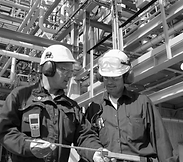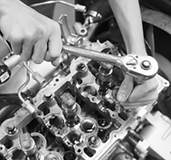Engineering and Technology Quarterly Reviews
ISSN 2622-9374




Published: 30 March 2019
Design and Construction of a Domestic Solar Cooker
Augustine U. Iwuoha, Martins B. Ogunedo
Imo State University, Owerri

Download Full-Text Pdf
10.5281/zenodo.2640450
Pages: 24-37
Keywords: Solar insolation (Owerri), Solar cooker, 2.5 kg of Beans, Efficiency
Abstract
Over the years, increase in energy demand has stirred up research interest aimed at harnessing the abundant energy from the sun to meet human’s energy needs. One of such needs is feeding, and this is achieved through cooking. Most of the conventional cooking methods affect the ecological system negatively. Hence, the study aimed to design and construct a solar cooker. The solar cooker is made up of four main parts viz: the pot, the parabolic reflective dish, the bracket and the dish stand with its base. The selection of materials for the construction of the solar cooker is governed by material properties, local availability, the service condition and cost. The quantity of heat needed for cooking a 2.5 kg of beans, for 120 minutes and the lowest solar insolation value of Owerri city recorded in December as 33.19 MJ/m2/day were used as the criteria for the dish sizing to ensure effective performance all year round. As a result, the area of the solar dish was constructed to be 3.6 m2 with a diameter of 2.15 m and a focal length of 1.0 m. Results of the performance evaluation carried out on the solar cooker showed that at a solar insolation value of 412.15 W/m2, the cooking time for 2.5kg each of beans, rice, yam, and boiling of 2.5kg of water were 120, 93, 67, and 13 minutes respectively. The efficiency of the unit is relatively stable within slight changes in solar insolation; a 6% change in the solar intensity would only affect the efficiency of the solar cooker by 0.7%.The study noted that solar insolation value plays a major role in the performance of the solar cooker because increase in the solar insolation value increases the heating rate, thereby reducing the cooking time. This suggests that in areas of the country with more hours of sun light and higher solar insolation, the use of concentrated solar panels for cooking is a viable option during day time.
References
-
http://www.solar-for-energy.com/active-solar-energy.html. Accessed 21/5/2018
-
Siegel R. and Howell J. R. 2002. Thermal Radiation Heat Transfer. Volume 1. 4 edition. Taylor and Francis.
-
Augustine, C and Nnabuchi, M.N. 2000. Analysis of some metrological data of some selected cities in the eastern and southern zone of Nigeria. African Journal of Environmental Science and Technology. 4 (2), 92 – 99.
-
Ihekoronye, A. I. and Ngoddy, P. O. 1985. Integrated Food Science and Technology for the Tropics, Macmillian Publishers, London.
-
Khurmi, R. S. and Gupta, J. K. 2010. A Textbook of Machine Design. Eurasia Publishing House (Pvt) Ltd., New Delhi India.
-
www.matweb.com/densityof mildsteel.html. Accessed 23/5/2018
-
www.farm.net/-mason/materials/thermal_conductivity.html. Accessed 21/5/2018



